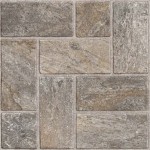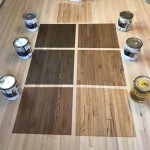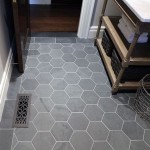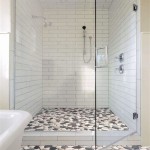Tile and Wood Floor Transition
Transitioning between tile and wood flooring can create a visually appealing and functional connection between two different flooring materials. By using the appropriate techniques and materials, a smooth and seamless transition can be achieved, enhancing the overall aesthetics of the space.
1. T-Molding: A T-molding is a metal or plastic strip with a T-shaped cross-section. It is placed over the joint between the tile and wood flooring, creating a transition that covers the exposed edges of both materials. T-moldings are available in various colors and finishes, allowing them to blend well with the existing décor.
2. Reducer: A reducer is similar to a T-molding but has a sloped profile. It is used when the wood flooring is at a slightly higher level than the tile flooring. The reducer creates a gentle transition, preventing tripping hazards and providing a smooth surface for movement.
3. Threshold: A threshold is a raised transition strip that is typically used when there is a significant difference in height between the tile and wood flooring. Thresholds are available in a variety of materials, including wood, metal, and stone. They not only create a smooth transition but also help to define the separation between the two flooring types.
4. Flush Transition: A flush transition is achieved when the tile and wood flooring are installed at the same level, creating a seamless and level surface. This type of transition is visually appealing and eliminates any tripping hazards. However, it requires precise installation and may not be suitable for all floor types.
5. Saddles: Saddles are saddle-shaped transition strips that are used when there is a change in flooring direction. They are typically installed in doorways or other areas where two flooring types meet at an angle. Saddles provide a smooth transition and help to define the separation between the two flooring types.
Choosing the Right Transition: The choice of transition depends on the specific requirements of the installation. Factors to consider include the height difference between the flooring materials, the desired aesthetic effect, and the durability and wear resistance of the transition material. It is important to consult with a flooring professional to determine the most appropriate transition for the project.
Installation Considerations: Proper installation is crucial for a successful tile and wood floor transition. The subfloor must be level and prepared to ensure a smooth and stable base for the flooring materials. The transition strips should be cut to the correct size and securely fastened to the subfloor. It is recommended to use a sealant around the edges of the transition to prevent moisture penetration.
Maintenance and Care: Regular cleaning and maintenance are essential to preserve the beauty and longevity of the tile and wood floor transition. Sweep or vacuum the transition regularly to remove dust and debris. Use appropriate cleaning products for each flooring material to avoid damage. Avoid using harsh chemicals or abrasive cleaners, as they can damage the surface of the transition.

Tile To Wood Transition Mix Your Flooring Materials Builddirect

Guide To Flooring Transitions

Smooth Tile To Wood Floor Transitions For A Beautiful Finish

Tile To Wood Floor Transition Ideas 11 Clever Ways Atlas Ceramics

Hexagonal Tile To Hardwood Floor Bathroom Transition Fusion Philadelphia By Dremodeling Houzz

Mastering The Transition From Wood To Tile East Coast Flooring Interiors

Hexagon Tile To Hardwood Floors

5 Ways To Transition From A Tile Wood Floor Arizona

Tile To Wood Transition Mix Your Flooring Materials Builddirect

Understanding Wood To Tile Transitions Flooring Masters Pro Remodeling








